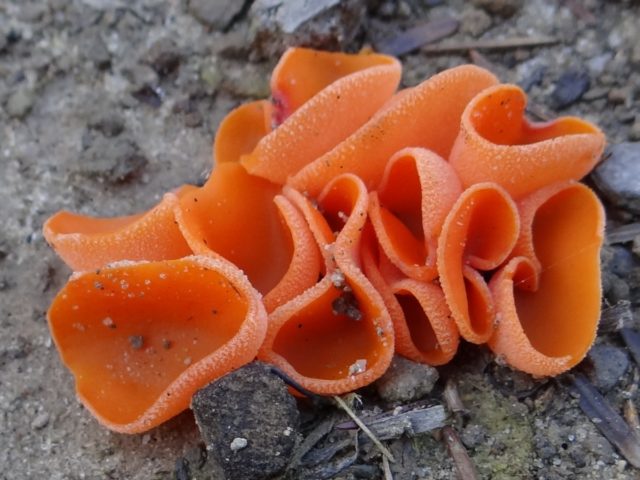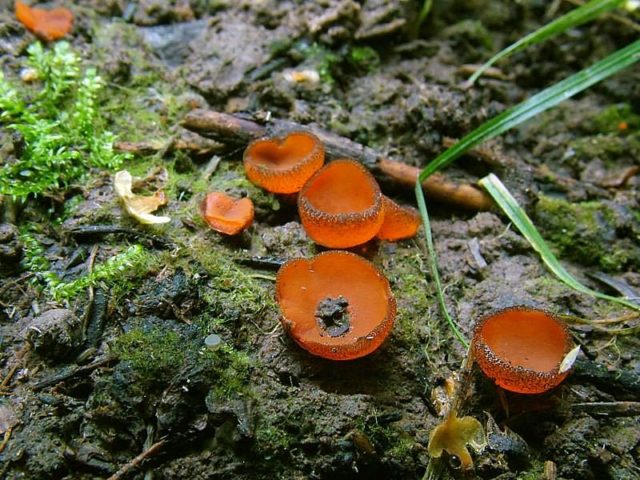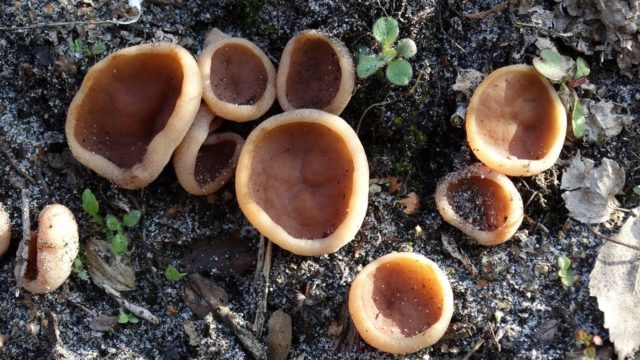Content
A bright unusual mushroom, a pink-red saucer (popular name), is rarely found in the forests of central Russia. Orange pecica or aleuria is a scientific term; in Latin it sounds like Peziza aurantia or Aleuria aurantia. This species is related to morels, attributed to the department of Ascomycetes.
What does an orange pepper look like?
The fruit body is bright, smooth, bowl-shaped, with uneven wavy edges. The color of the upper surface is bright, yellow-hot, orange-reddish. Below, the fruit body is whitish, slightly pubescent. Old silts become flatter, saucer-shaped, grow together. The diameter of the fruiting body does not exceed 4 cm; it is rare to find a saucer up to 8 cm in diameter.
It has no leg, it sits tightly in the ground. The flesh of young aleuria is thin, fragile, tender. Smell and taste are poorly expressed.
Spore powder and white spores.
Where and how it grows
Orange pepper is common in the northern part of Russia, in regions with a temperate climate. You can find it in deciduous and mixed forests, along roadsides, in parks in well-lit glades. Prefers loose soil. Orange pecica is found on the plain and at the foot of the mountains.
A pink-red saucer grows in a large family. The fruiting bodies are planted so close to each other that they subsequently grow together into a large wavy orange-colored mass.
Fruiting of aleuria lasts from early June to early October only in rainy and humid weather. In hot dry summers, a saucer is hard to find. In shaded areas, the silt grows dull and pale.
Is the mushroom edible or not
Orange pecitsa - safe for humans, conditionally edible plant gift of the forest. It can even be eaten raw. In cooking, it is used as a spectacular decoration for various dishes and even desserts.
Dried and crushed petsitz is used as food coloring.
Doubles and their differences
Sarcoscif alai or elf bowl - an unusual bright twin of the orange pecica. This is an edible mushroom, the color of which is more scarlet, the fruiting body is shaped like a bowl, not a saucer, the edges are even, the cap is attached to a thin, short stem.
Hair melast - a poisonous mushroom, the counterpart of the orange pec. The fruit body of an inedible species is more red, the edges of the cap are covered with a dark fluff. Hair chalk is slightly smaller than saucer.
Thyroid discina - edible mushroom, one of the varieties of petsia. The color of the twin is darker, brown or beige. The cap is uneven, its surface is rough.
Conclusion
Orange pecitsa is a beautiful, bright, conditionally edible mushroom that is hard to miss. It is used in food even raw, in the form of salad dressings. The edibility of the saucer is relative.It is important to remember that only young mushrooms are considered absolutely safe, old flat and accreted ones are not recommended to be eaten.













